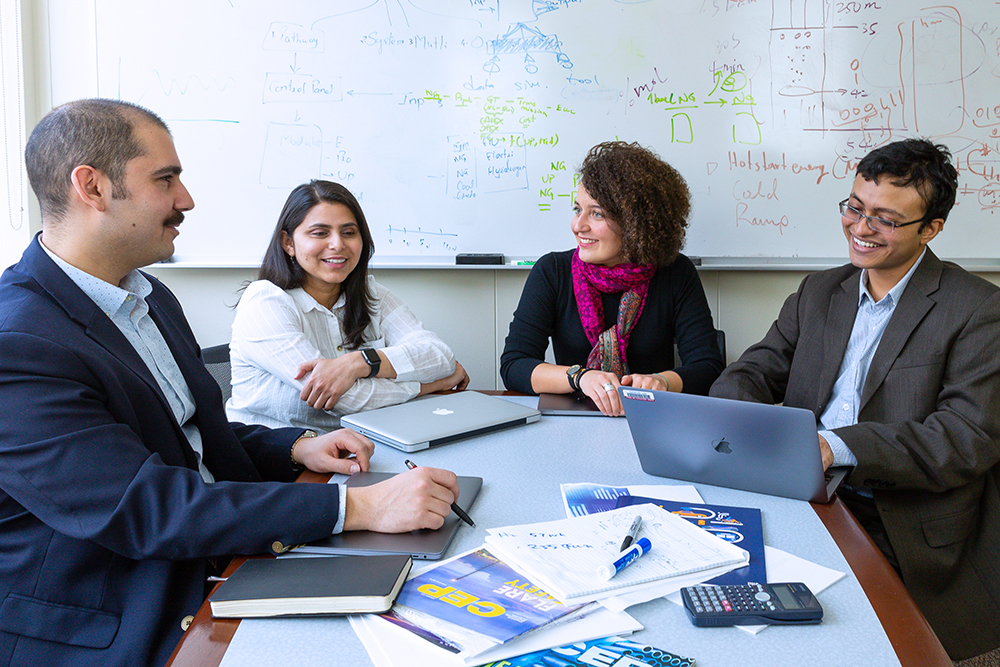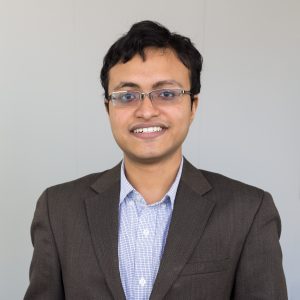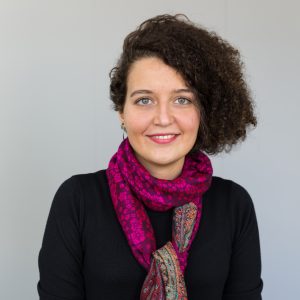
For Naga Srujana Goteti, a postdoc at the MIT Energy Initiative (MITEI), finding a meaningful career has required starting from scratch—three times. She first worked as a software engineer after earning a bachelor’s degree in electrical engineering, but after just one year in the role, she felt like something was missing. Her father, a civil engineer, encouraged her to look for meaning and opportunity in the energy space.
Goteti dropped her software engineering position to perform energy audits on buildings as an intern at a small startup, where a visiting professor inspired her to move from India to Thailand to pursue a master’s degree in energy. After completing her graduate program, she still wasn’t quite sure where she could best apply her interdisciplinary background. She ended up joining an oil and gas company to work on pipelines.
“I really enjoyed the salary, of course, but after one year, I went back to my original question of, ‘What’s the purpose of this?’ I wasn’t finding any meaning in the work I was doing,” she says.

Naga Srujana Goteti’s journey to find a meaningful clean energy career led her to MITEI, where she is pleased to be part of an interdisciplinary team to work on SESAME. Photo: Kelley Travers
She quit her oil and gas job, desperately seeking leads on research opportunities in clean energy. At one point, she was cold-emailing “at least 30 professors per day.” Her efforts paid off when a team at the Rochester Institute of Technology (RIT) informed her that it was seeking someone with an electrical engineering background, plus experience with energy and sustainability, to join a special project. Goteti fit the bill and came to the United States to pursue her PhD in sustainability.
“After getting my PhD at RIT, I really wanted to work on an interdisciplinary team that was focused on reducing carbon dioxide emissions by looking at multiple renewable energy pathways instead of just one,” she says. This quest led her to MITEI.
Goteti has teamed up with Tapajyoti “TJ” Ghosh, a chemical engineer from India, and Maryam Arbabzadeh, a lifecycle assessment (LCA) practitioner from Iran—an interdisciplinary group of postdocs who came to MIT to work on a novel energy assessment tool called the Sustainable Energy System Analysis Modeling Environment (SESAME).
Many of the energy assessment tools that exist today zero in on only one slice of the energy pie. They offer a granular analysis of solar, wind, or nuclear, but rarely look at multiple pathways together, which limits the ability of policymakers and industry professionals to see the real-time impacts of various technologies across the energy landscape as a whole.
“Today, we are facing a dual challenge: satisfying growing energy demand while reducing emissions,” says Emre Gençer, a research scientist at MITEI and leader of the SESAME project. “The composition and operation of energy systems determine our ability to meet this challenge. We developed SESAME to study all energy sectors at the pathway and system levels.”
SESAME, which has been under development at MIT since 2017, enables users to understand the impact of all relevant technological, operational, temporal, and geospatial variables to the evolving energy system. Several existing LCA models require expert help in order to parse the data in a way that is useful for policymakers and industry. The SESAME tool aims to bridge that divide, so that experts and laypeople alike can understand today’s energy landscape and make informed decisions about the best paths forward.
Gençer spent almost a year assembling the perfect team of postdocs to help expand the tool. MITEI’s SESAME team is now about 20 people strong, including postdocs Arbabzadeh, Ghosh, and Goteti, plus a mix of undergraduates, graduate students, research scientists, and PhD candidates from across MIT.
“The multidisciplinary nature of this project requires a strong mix of research backgrounds,” says Gençer. “We weren’t just looking within one specific discipline to build the SESAME team. We were very intentional about bringing together researchers with experience in different areas such as engineering, environmental studies and sustainability, and economics.”
MITEI’s goal is to develop SESAME as an open-source web application—one that incorporates energy case studies from around the globe and takes into account the heterogeneity of data across regions. These expansion directions are where Arbabzadeh, Ghosh, and Goteti come in.
Pathways to MITEI
As a child, Tapajyoti Ghosh visited oil fields and gas facilities across India with his father—“an oil and gas man.” He remembers wondering, “What’s going to happen when all the oil is gone?” His interest in the environmental impacts of society’s dependence on fossil fuels and finding sustainable alternatives came later.

Tapajyoti Ghosh came to MITEI for the opportunity to work on SESAME, which he sees as a groundbreaking environmental impact assessment tool that will help industry and policymakers. Photo: Kelley Travers
Ghosh earned his bachelor’s degree in chemical engineering in 2014 from Jadavpur University in Kolkata, India, after which he came to the United States for a PhD program at Ohio State University.
“I had no idea what research direction I was interested in,” he says. “I spent the first semester of my PhD program deciding what I wanted to focus on.” But then a conversation with his professor set Ghosh down the energy path by introducing him to sustainable engineering.
“Sustainable engineering focuses on trying to reduce negative environmental impacts that are caused by engineering processes not considering the external impacts of their activities,” he says. “I was interested in figuring out how we can make our engineering processes take environmental impacts into account during the design process while also helping industry make profits.”
He came to MITEI for the opportunity to work on SESAME, which he sees as a groundbreaking environmental impact assessment tool that will help industry and policymakers. He hopes to return to India someday to become a faculty member at a university there.
“Completing my postdoctorate at MIT will have a huge impact on my future,” he says. “I received several offers from other universities and research centers, but for me, the lure was getting to be at MIT. I feel like I’m in the Hollywood of academia.”
Ghosh’s role at MITEI is to literally “open SESAME”—he is working to convert the tool from a MATLAB application, which is a proprietary programming language developed by MathWorks, to an open-source web application, which will make SESAME available for all to use. This is a Herculean effort; the SESAME platform was designed with a modular structure to allow the analysis of a very large number of conventional and novel pathways—more than 1,000 energy pathways are embedded in the framework, capturing about 90% of energy-related emissions data. SESAME’s framework provides multiple functionalities for various energy stakeholders in a single tool. For example, those working in industry or policy can compare technology options, perform technology and system scenario analyses, or explore the impacts of market and policy dynamics; or energy experts can see comprehensive cross-technology comparisons. Ghosh needs to translate all of this into Python coding language for the open-source version of the tool.
“I’m also working with an undergraduate student to gather additional environmental impact data that we can add to the tool, and adding new pathways for analysis,” he says. Some of those new pathways include the production of ammonia, cement, iron, and steel.

Maryam Arbabzedeh was drawn to the SESAME project for the chance to develop a tool that brings together data from different energy sectors and that allows policymakers and energy modelers to perform system analyses for themselves. Photo: Kelley Travers
Maryam Arbabzadeh received her bachelor’s in electrical engineering, with a focus on power systems, from Amirkabir University of Technology (formerly Tehran Polytechnic) in Iran.
“That’s where I started learning about renewable energy. I did my undergraduate thesis on wind energy and developing tools so users could suggest the most effective locations for installing wind turbines,” she says.
When it came time for her master’s degree, Arbabzadeh knew she wanted to continue studying electrical engineering, with a focus on energy systems. She came to the United States to attend the State University of New York at Buffalo (SUNY Buffalo), which sparked her interest in finding ways to reduce the negative environmental impacts of power generation.
“At SUNY Buffalo, I took classes on sustainable energy systems and climate change, and that’s where I first discovered that one of the main sources for environmental emissions is the electricity sector/power grid. I became really interested in learning about that aspect of electricity production,” she explains.
From there, she applied to multidisciplinary programs for her PhD, landing at the University of Michigan’s School for Environment and Sustainability to work on an energy storage project.
“My PhD advisors were looking for someone with a background in electrical engineering who was also interested in learning about energy and lifecycle analysis, so it was perfect for me,” she says. “My dissertation mainly focused on energy storage and technologies but at a high level—all about the optimization of the power grid and how the addition of emerging technologies such as energy storage would affect the grid.”
She was drawn to the SESAME project because, during her experiences as an LCA practitioner and power systems modeler, she faced a number of challenges when it came to gathering all the disparate pieces of data she needed in order to form a comprehensive energy picture.
“It is interesting for me to develop a tool that can bring together all of these pieces from different sectors—power, transportation, et cetera—and that will allow policymakers and energy modelers to use the tool to do a system analysis for themselves,” she says.
SESAME currently contains data from North American case studies. Arbabzadeh’s portion of the project, which is funded by the International Energy Agency Gas and Oil Technology Collaboration Program, involves identifying international case studies that can be incorporated into SESAME to help the tool expand beyond the United States. “Emre asked me to focus specifically on examining global perspectives, so it has been fascinating for me to see how our analysis might apply to other locations.” So far, Arbabzadeh has focused her efforts on identifying potential case studies, including Norway/Northwest Europe and Singapore.
“In contrast to the United States, Norway’s energy sector is already clean because a huge amount of its power generation comes from hydro, with some support from wind and thermal,” she says. Norwegian exports to continental Europe can enable displacement of coal with natural gas and reduce greenhouse gas emissions.
“Oil and gas production is the main contributor to greenhouse gas emissions in Norway, followed by industry and transportation,” Arbabzadeh says. She is working with an undergraduate student to examine the production activities and their associated emissions from about 90 oil and gas fields across Norway. These emissions can be more than offset by planned innovative offshore CO2 capture and sequestration projects that will permanently store CO2 captured from various sources across Europe.
This information could help Norway and other oil and gas producers from around the world to learn about how they can reduce greenhouse gas emissions in their processes and associated systems.
Arbabzadeh’s interest in contributing to the SESAME tool spans beyond professional motivation: “Personally, I want to make an impact. I was very interested in coming to MITEI to work on this tool because when it becomes available, it will really make a difference in various sectors and will be so useful for stakeholders working across the energy space.”
Her work on the tool complements that of Goteti, who has been charged with capturing the heterogeneity of the data from across the United States, starting with power systems. “This is a major challenge, because it requires cross-linking all of the databases across the country so that they can be integrated into the SESAME platform,” says Goteti. “I’m aiming to automate this process so that it can be used in SESAME as part of our analysis to show, for example, how California is different from Texas.”
Arbabzadeh and Goteti use similar research models for their respective parts of the project.
“There is a weird disconnect between different types of energy researchers. LCA people look at energy models differently from complex energy system modelers. Complex energy system models typically examine one area in minute detail, while LCA looks across the spectrum,” says Goteti. “SESAME fills the operations versus lifecycle gap in many of today’s models by offering all energy experts a holistic approach to analyzing all of the systems together.”
Collaborating to “open SESAME”

From left to right: Tapajyoti Ghosh, Naga Srujana Goteti, Emre Gençer (a MITEI research scientist and the SESAME team leader), and Maryam Arbabzadeh. Photo: Kelley Travers
When asked how their roles work together, Arbabzadeh offers a deceptively simple explanation: “TJ is working on the framework and gives us direction in terms of what specific data the tool needs, and that’s what Srujana and I try to collect.”
The reality of the scope of the work with which they’ve each been charged, and the level of collaboration that is required to meet those goals, is much more complex. The interdependent nature of their work requires that they check in with each other daily, as progress on the project relies on results from each person. The information Ghosh receives from Goteti and Arbabzadeh is integral to the SESAME expansion; and, in turn, Goteti and Arbabzadeh rely on direction from Ghosh in order to procure the data and to ensure it is in a SESAME-compatible format.
The team is also working to incorporate other environmental impact categories in the model—beyond just greenhouse gas emissions, which is the tool’s current focus. They are hoping to include factors such as water impacts, air pollutants, and land use.
Although they have different research backgrounds, Goteti explains, “We have a common thread of experience with LCA, so we have a basic understanding of what the SESAME team is doing across the board, even though we may not know what each other is working on at a granular level.”
In addition to supporting each other as they bring their various areas of expertise to bear on their work at MITEI, the team members say they have found support from MITEI and from the MIT postdoc community as a whole.
“MITEI is a unique center where people talk to each other about what they are working on, even to others outside their project. Research scientists, postdocs, and students sit together to discuss our research, and we actually provide each other with valuable input,” remarks Goteti. “There’s not a tunnel view of your own projects; everyone is open to helping others, which is not the case at more corporate places, where it’s a spirit of ‘my project versus your project.’”
Arbabzadeh concurs: “In addition to collaboration on research, I was surprised to learn how postdocs are acknowledged here at MIT. There are a lot of professional development resources and even a career advisor specifically for postdocs! It was unique for me to see how postdocs are treated here.”
Both Goteti and Ghosh also value the proximity to leading faculty, within MITEI and across MIT. “Getting inside access to faculty is a big deal for me, coming from India,” says Goteti.
“I feel fortunate to have a peek into this very exclusive world. These kinds of opportunities—being able to engage with the world’s leading researchers, CEOs, et cetera—were just not available to me at my previous institutions,” says Ghosh. “The founder of Zipcar sits right across from my cubicle! There is a Nobel Prize–winning lab on the floor below ours.”
Each member of the trio will present results from their portions of the SESAME tool expansion at various conferences. The team has also contributed to a series of journal articles about the tool, which they anticipate will be published over the coming year.
Contributing to the low-carbon energy transition
Coming from different backgrounds, Arbabzadeh, Ghosh, and Goteti are united by their desire to devote their expertise to pushing forward cutting-edge clean energy solutions.
Ghosh would like to answer the questions he’s had since his childhood, first sparked by his visits to oil fields with his dad. “What’s going to replace the world’s dependence on fossil fuels? What is the cleanest form of energy that humans can depend on for a long amount of time? Is it going to be Tony Stark’s arc reactor or some nuclear fusion reactor like a tokamak, or just solar and wind, or some other miracle solution? I’m interested in answering futuristic questions like these,” says Ghosh.
Arbabzadeh is focused on using her experience to solve environmental challenges for the benefit of our planet and its future inhabitants. “During my master’s degree work, I learned about the negative environmental impacts of electricity production and wondered: ‘How can we improve this? I have the skills and knowledge, but how can I do more?’” adds Arbabzadeh. “Trying to solve these challenges is exciting for me. I think the energy sector is very important in terms of climate change, and the decarbonization of power production is an area where we can truly make a positive impact for future generations.”
In energy, Goteti has found the meaningful work that she craved for all those years; there will be no more starting over. “Governments collapse because of energy; economies are driven by energy—I think energy is the backbone for so many things that we don’t realize,” says Goteti. “That excites me a lot. As a kid, I was never into politics, but now I watch the news all the time and understand that everything is related. At the end of the day, it’s all about energy.”
Support for the SESAME tool has been provided by ExxonMobil and the International Energy Agency Gas and Oil Technology Collaboration Program. The SESAME online beta is expected in mid-2020. Sign up to become a beta user at sesame.mit.edu.
This article appears in the Spring 2020 issue of Energy Futures.